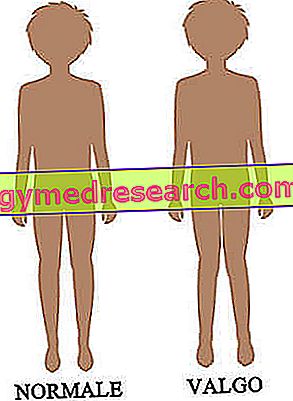What is Crohn's disease?
Crohn's disease is a chronic inflammatory disease of the digestive system and can strike with segmental distribution (ie a little here and a little there, without continuity), any section from the mouth to the anus.
Most commonly, Crohn's disease affects the terminal ileum (final portion of the small intestine) or the colon (large intestine).

Unfortunately, a resolving cure for Crohn's disease has not yet been identified. However, there are pharmacological protocols useful for symptom control and relapse prevention, while surgery is reserved for cases complicated by intestinal obstructions, fistulas or abscesses.
Causes
The causes of Crohn's disease are unknown, but it has been shown that the alterations it causes derive from an inappropriate and continuous activation of the immune system of the intestinal mucosa.
Today, we know that the onset of Crohn's disease can be traced to three interacting factors: a susceptibility to genetically determined disease (it was discovered that in patients with Crohn's disease there is a gene called NOD2 that is altered), tissue damage due to an immune reaction triggered by bacteria from the flora of the gastrointestinal tract, and various environmental factors.Regarding microflora, in healthy individuals the intestinal mucosa is in a state of controlled (physiological) inflammation; The purpose of these reactions is the formation of IgA antibodies (Immunoglobulin A), which bind to microorganisms and make it easy for them to be eliminated by the immune system. In Crohn's disease, on the other hand, inflammation is no longer controlled and causes tissue lesions.
Among the environmental factors we find the use of non-steroidal anti-inflammatory drugs (NSAIDs), which can cause recrudescence; cigarette smoking also increases the risk of developing the disease.
Insights
Location of the injuries Symptoms Consequences of the diseaseDiagnosisComplicationsTrainingTherapyCroids for the treatment of Crohn's diseaseDietSeat of injuries

Crohn's disease is more frequently localized to the ileum (ileite), typically involving its final portion; rather common is the involvement of the colon (especially ascending) both alone (colon Crohn's disease: about 10%), and associated with ileus (ileocolitis: about 40%); the rectum is affected in 5% of cases and even more rare is the involvement of the duodenum and stomach (1%). In a small percentage of patients, especially children and adolescents, there is also an important and extensive involvement of the jejunum (central part of the small intestine), as well as of the ileum. In the sections involved in Crohn's disease inflammatory changes affect all layers of the intestinal wall, causing thickening of the same and ulcerations. Inflammation sometimes tends to spread to nearby lymph nodes.
The tissue affected by the lesions caused by Crohn's disease tends to die (necrosis), so that the mucosa can ulcerate and, below it, fistulas can form; these, in turn, can connect two intestinal loops or can even open in other organs (bladder, ureter, vagina) or even outside, especially in correspondence to surgical scars, or around the navel. Sometimes these fistulas are of considerable length and can even reach the gluteal region or the hip.
Consequences
The inflammatory process caused by Crohn's disease, especially if it involves large tracts of intestine, alters the absorption mechanisms of different substances. Usually the reabsorption of bile salts is compromised, which occurs mainly in the terminal ileum, so there is a loss of these substances, which normally stimulate the reabsorption of dietary fats, with the consequent appearance of steatorrhea (fat in feces). Furthermore, bile salts bind calcium; it follows that their deficit causes an increased risk of developing calculations for a surplus of free circulating calcium. The malabsorption of some vitamins, especially B12, D and K, can also be established. When Crohn's disease is widespread at very extended parts of the small intestine, malabsorption can be global, involving all nutritional factors.
As a rule, diarrhea occurs, due to the reduced absorption of bile salts in the ileum, to the malabsorption of carbohydrates (which cause it by attracting water in the intestine), and to the frequent secondary bacterial colonization that occurs in the affected portions.
Crohn's disease - Video: Causes, Symptoms, Cures
X Go to the Video Page Go to Wellness Destination Watch the video on youtubeSymptoms
To learn more: Symptoms of Crohn's disease
The patient suffering from Crohn's disease is usually young or adult (20-40 years), although there may be exceptions with onset at a later age (even around the age of 60). The symptoms can initially be subtle: at first you can only have fever; subsequently abdominal pains appear, especially in the lower right quadrant of the abdomen (right iliac fossa), where the disease is localized more often. The pain arises spontaneously, is deaf, continuous and is accentuated at palpation; here the perception of irregular and painful "sausage-like" masses is frequent. Crohn's disease is also characterized by the presence of diarrhea (3-4 shocks per day), with semi-liquid or watery stools, but without visible blood (even if occult bleeding episodes are frequent), sometimes with steatorrhea.




